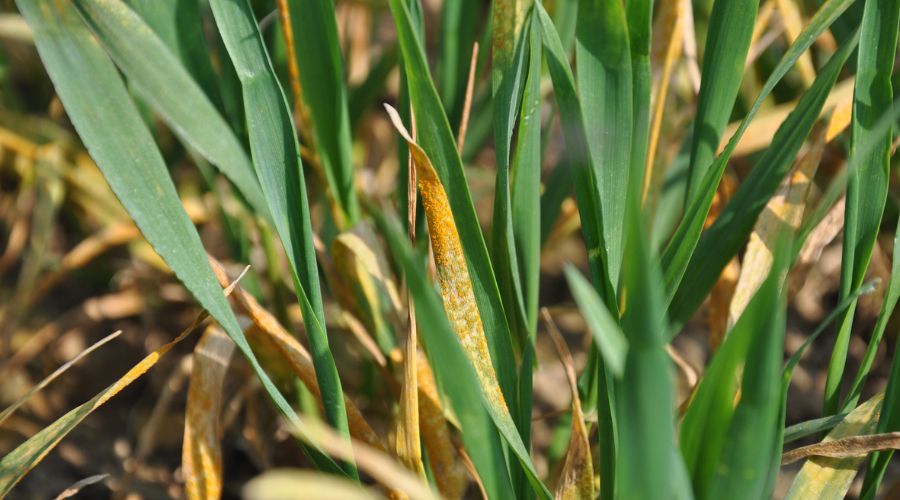Growers urged that yellow rust ‘lurking’ in wheat needs cost-effective early control
8th April 2024
A perfect storm of late-drilled fields, susceptible varieties and a mild winter mean that yellow rust is now lurking in many winter wheat crops, said a Syngenta cereal disease expert.

Joe Bagshaw explained that with its potential to inflict as much as 50% yield loss, it will be important to tackle yellow rust early, before it has a chance to spread up the plant.
Mr Bagshaw said: “Unlike Septoria tritici, which is favoured by earlier drilling, yellow rust tends to be more of a problem in later-drilled winter wheat.
“Clearly, later drilling has been commonplace this season because of the washout weather. But several key varieties that are suited to later drilling also have low yellow rust resistance ratings. On top of that, winter temperatures simply haven’t been cold enough to kill off the lower leaves where yellow rust is lurking.
“All this means we now have a bank of infection in the base of many wheat crops. This will need controlling before it spreads up to the top three leaves, because these leaves contribute about three quarters of final yield.”
Cost-effective solutions
With yields already likely to be depressed to some degree because of later drilling, Mr Bagshaw said it will be vital to do the best possible job of safeguarding the remaining yield potential, but to do so cost-effectively.

“Understandably, growers will be looking for cost-effective fungicides in the early part of the season. But it’s important to ensure these fungicides also provide proven yellow rust activity wherever this is a threat.
“Consult the fungicide dose response curves on the AHDB website, which show results on the reductions in yellow rust and yields achieved with different fungicides.
“Solatenol (benzovindiflupyr), which is the SDHI fungicide in Elatus Era, has repeatedly given top-level results in yellow rust situations. It also provides excellent value for money for protecting crops at the important T1 fungicide timing, which starts the process of protecting the top three yield-building leaves.
“After the rains, it’s also clearly important to stay on top of Septoria tritici. Where later-drilled wheat crops contain lower levels of Septoria tritici, they should be in a more preventative situation than earlier-drilled fields. This again makes Elatus Era a good option to consider at T1 in these later-drilled situations,” he adds.
Better disease control
In addition, Mr Bagshaw said that tank-mixing a multi-site fungicide with an SDHI is always an important consideration for resistance management in Septoria tritici situations, to help protect the activity of SDHIs for the future.
“An SDHI which offers good value for money makes it an easier decision to include a multi-site in the tank mixture, and to apply that SDHI at a suitably robust dose for better disease control,” he adds.
Read more arable news.
